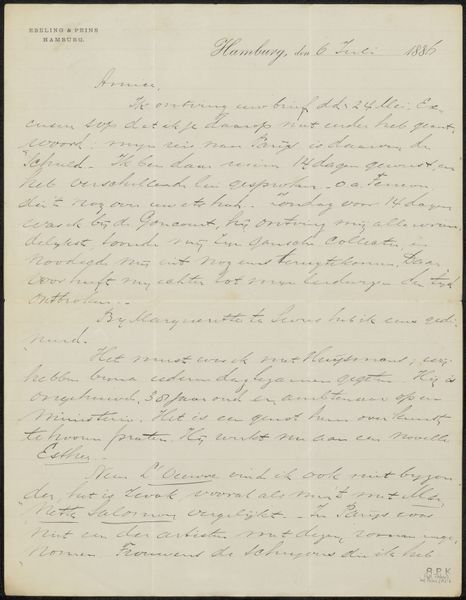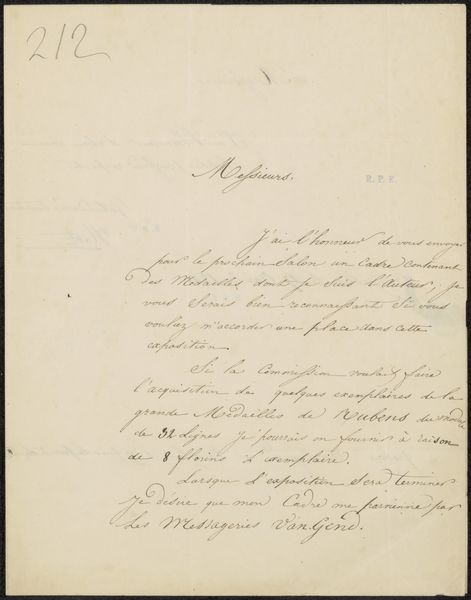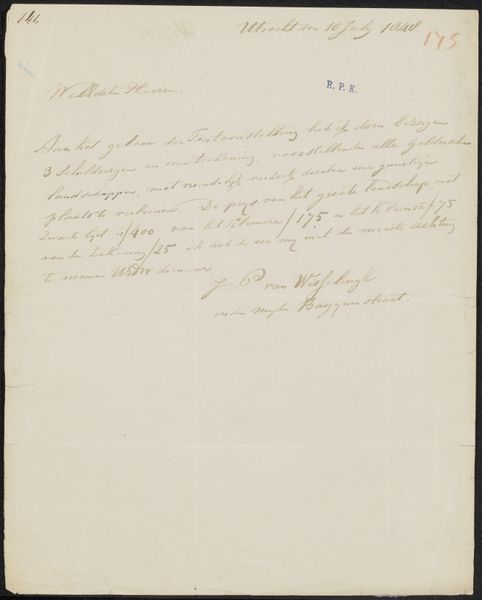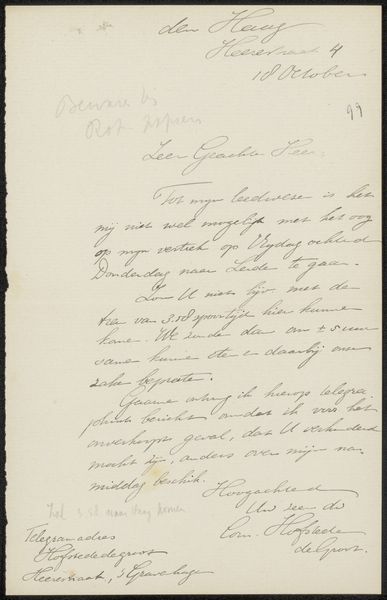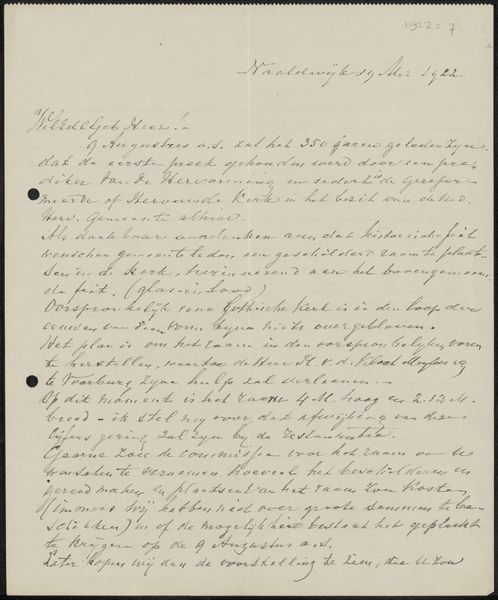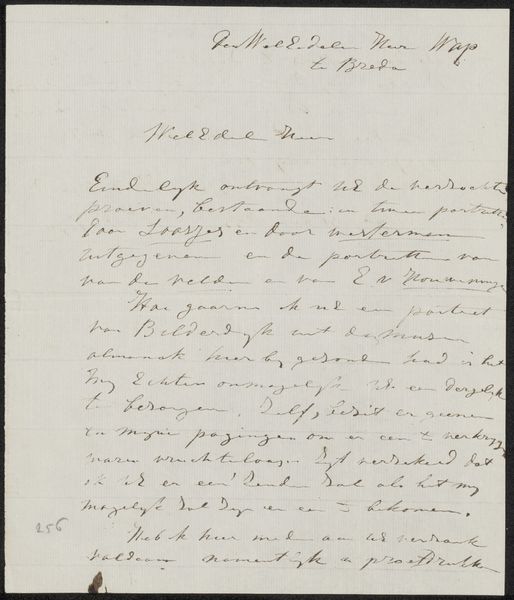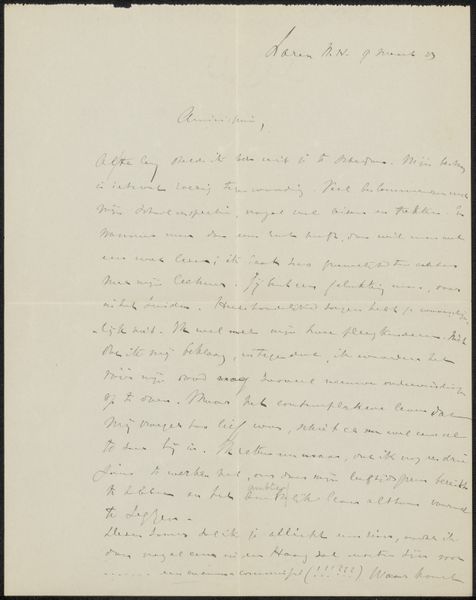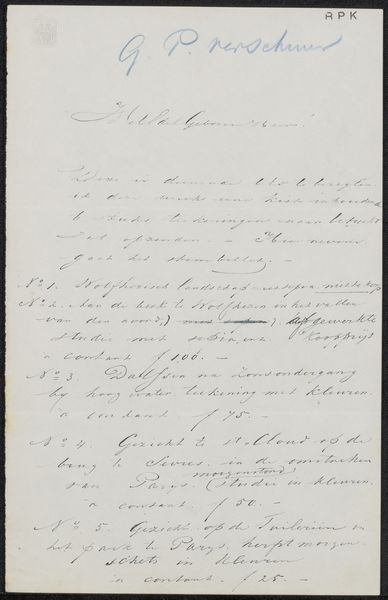
drawing, paper, ink
#
portrait
#
drawing
#
dutch-golden-age
#
paper
#
ink
#
calligraphy
Copyright: Rijks Museum: Open Domain
Editor: Here we have "Aantekening betreffende Alexander Liernur" by Désiré Samuel van Zuiden, dating sometime between 1891 and 1941. It’s a drawing in ink on paper, and frankly, it mostly looks like a handwritten note or historical document. The calligraphy gives it a formal, almost austere mood. What do you see in this piece? Curator: Well, seeing this through a historian's lens, the emphasis is less on individual artistic expression and more on the cultural context embedded within. This appears to be a reproduction or record of an older document, possibly related to artistic patronage or institutional procedures of the late 18th century. What does that final line indicate – “Vrye Haagsche Teckenscatenie?" Editor: That seems to say "Free Hague Drawing Academy" Curator: Exactly. Understanding the role of academies like the Hague Drawing Academy helps us understand how artistic taste and production were being shaped. We must consider these documents, like "Aantekening betreffende Alexander Liernur," as integral parts of the socio-political forces impacting art. It shows the structures of artistic validation and opportunities at that time. What do you make of the explicit mentioning of Holbein and permission to copy existing paintings? Editor: It implies the importance of studying and emulating established masters like Holbein and suggests an officially sanctioned method of artistic training. Curator: Precisely! This artwork offers a window into the institutional framework that controlled the lives and work of artists and, ultimately, the course of Dutch art history. We begin to see a system not so very 'free', after all, in some aspects, given all these levels of pre-existing constraint and permission to do. Editor: I didn't consider how a seemingly simple note could reveal so much about artistic structures of the time! Thank you.
Comments
No comments
Be the first to comment and join the conversation on the ultimate creative platform.
